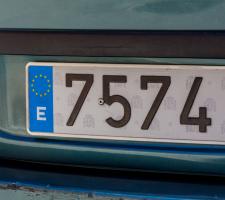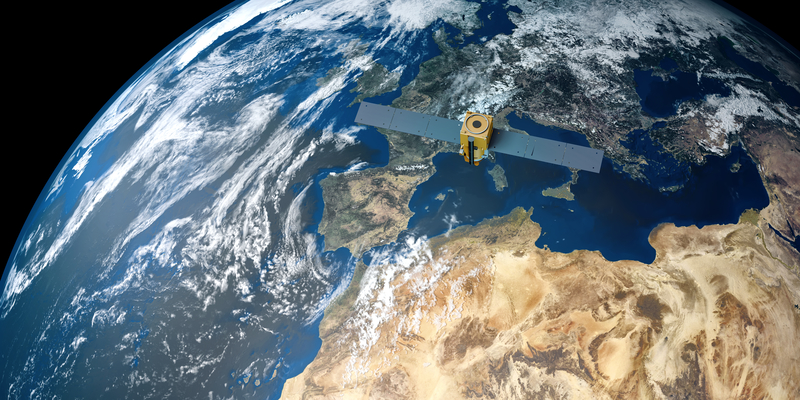
Electronic toll collection (ETC), road user charging or mobility pricing schemes are attractive and efficient tools to pay off investments that finance the building of infrastructure (roads, bridges or tunnels) all over the world. The schemes also support sustainable mobility and provide stable revenues for appropriate maintenance and upkeep - as well as maintaining or improving safety.
This article focuses on the technologies used in tolling, charging and pricing schemes and compares the impact and properties of technologies: dedicated short-range communication (DSRC), radio frequency identification (RFID), automated number plate recognition (ANPR), global navigation satellite system (GNSS) and technologies embedded in smartphones.
Not only do the technologies differ, their usage is also very different. Users are faced with many uncomfortable or awkward requirements to pay their tolls or charges: payment by (exact) cash, use of credit cards, free-flow or toll plazas with separated lanes, barriers to force vehicles to stop, difficult registration or purchase of on-board units, pre-paid tickets, many different tariffs and so on. There is a lot of harmonisation work ahead for policymakers, operators and integrators.

Innovation, digitalisation, automation and ‘smartphonisation’ will help to further improve tolling, charging or pricing schemes: free-flow or ORT (open road tolling) as the main mode of operation, non-discriminatory access, interoperable on-board equipment, easy human interfaces, better security and privacy protection, minimum roadside infrastructure, high service levels, efficient enforcement and compliance checking, cross-border interoperability and additional services. Tolling, charging or pricing tariffs have to be more utilised to support sustainable mobility with fully distance-based models, policies to reduce congestion and the negative impacts of traffic to the environment, foster shared mobility and intermodality with public transport or increase road safety.
Dedicated short-range communication
DSRC (in the 5.8 GHz frequency band) is a mature technology used for bi-directional data transfer between vehicles and roadsides. The main elements of this technology are DSRC on-board units (OBUs) with read/write capabilities, and DSRC readers installed at the roadside in lanes, segments, entrances, or exits, depending on the policy and tariff of the system. Thus, modifications in the road network have to also be adapted in the roadside infrastructure. The cost of DSRC OBUs is in the range of €8-€10, and batteries need to be replaced regularly - approximately every five years or so. Thus, also logistics for distribution and maintenance for OBUs is required. DSRC offers very high security for revenues. Enforcement in DSRC technology-based systems to prevent fraud is based on ANPR cameras reading the licence plate. The ANPR cameras can be at fixed locations on the roadway, usually mounted on tolling gantries, or set up as portable units - or installed in mobile units.
DSRC is the most widely adopted ETC technology in Europe. In the rest of the world, DSRC 5.8 GHz technology is seen to be replaced often by RFID. DSRC OBUs have strong in-built security authentication features which allow expanded use for value-added services, such as parking or access solutions. DSRC is also the standard technology included in the European Electronic Toll Service (EETS), offering interoperability throughout the European Union for GNSS-based ETC systems.
Radio frequency identification
RFID communication is also a mature technology used for bi-directional data transfer between vehicles and roadsides. Main elements of RFID technology are the RFID tag (also called sticker-tag) with read/write capabilities, and the RFID reader to be installed in lanes, segments, entrances or exits, depending on the policy and tariff of the system. Thus, road network modifications have to be reflected also in the roadside infrastructure. RFID tags are known to be very cost effective since the cost is at or below €1. In addition, RFID tags need no batteries. Also, RFID readers are very cost effective. RFID technology offers also a wide range of other applications, allows easier integration, lower capital investment and operational cost than DSRC. However, RFID does not provide the same level of security as DSRC. To avoid toll evasion, ANPR cameras are used for enforcement in RFID technology-based systems.
RFID is the most widely adopted technology for ETC schemes worldwide (except in the European Union) for all types of vehicles. RFID sticker-tags have long been used by the US E-ZPass toll system. With the 18000-6B, -6C or rather the -36 standard, performance and security have been increased on a global basis. RFID sticker-tags used in European projects include the Herrentunnel in Germany, the UK’s Mersey Bridge and parts of the Turkish toll road network. France is also in the process of testing RFID for motorway tolling. RFID sticker-tags may also be used for value-added services such as parking, traffic management or access control. Some countries have started to define RFID technology being implemented into licence plates for electronic vehicle identification (EVI), with no need to distribute RFID sticker-tags anymore, being utilised for tolling as well as for road safety purposes in speed or red-light enforcement.
Automated number plate recognition
ANPR is another mature technology. It reads the licence plate and thus, no OBUs are required. ANPR is based on versatile industrial (digital) cameras specifically designed to capture high-quality images of licence plates as well as of vehicles in a variety of environments and light conditions at any traffic speed. ANPR needs to be supported by a licence plate database accessible for the operator. Main elements of ANPR-based systems are the ANPR cameras required for each lane, segment, entrance or exit, depending on the policy and tariff of the system, and communication capabilities from the roadside to the back office. Modifications in the road network have to be followed by the roadside camera infrastructure. The advantage of ANPR is that the cameras serve both purposes: capturing of plates for toll collection, and for enforcement with other technologies.
The performance of ANPR-based toll collection schemes may be affected by poor weather conditions (snow, ice, heavy rain, fog), by obscured (broken, dirty or customised) number plates or occlusion in dense traffic. As a result, full distance-based charging may be impacted negatively due to loss of transactions and thus losses in revenues. To mitigate this disadvantage, machine vision techniques are used to augment accuracy levels, while vehicles are often also equipped with RFID stickers issued by the toll operator. In addition, obtaining access to foreign licence databases may be difficult due to privacy and jurisdictional issues.
Global navigation satellite system

GNSS-based schemes involve the vehicle’s geophysical position information to toll or to measure the usage of roads by distance travelled on the specific road or road network. GNSS determines the vehicle’s position via a network of orbiting satellites, currently possible through GPS (US), Glonass (Russia), Galileo (EU), or Beidoo (China). Main elements of GNSS-based systems are GNSS OBUs in the vehicle and mobile data communication with the back office, where map-matching technology is used to calculate toll charges. In most systems, ANPR cameras are used for enforcement to cross-check vehicle usage of the road network.
The main advantage of the use of GNSS is the fact that no tolling roadside equipment is required. Thus modifications to the tolled road network can be implemented virtually in the back office. However, GNSS on-board units are more expensive to procure, install and operate. GNSS OBUs being based on GNSS technology are offered with full functions, or at reduced cost as ‘ITS adapters’ or ‘vehicle trackers’, having minimal or no human interface. GNSS is also the basis for the nationwide HGV tolling schemes in Belgium, Germany, Hungary, Russia, Slovakia, and shortly also in Bulgaria and the Czech Republic. The use of GNSS is mandatory for the EETS. To limit toll evasion, GNSS-based systems need to be complemented with enforcement equipment typically using ANPR, DSRC or RFID technologies.
Smartphones
Smartphones used in tolling systems are a new charging or toll collection platform based on the smartphones’ embedded GNSS and GSM technologies and communication, designed to replace DSRC OBUs or RFID tags. Since smartphones do not require other in-vehicle devices, this results in lower initial investment costs compared to other technologies.
The use of smartphones also offers a convenient, cost-efficient and time-saving way to manage customer accounts, receive real-time feedback on the journey, and benefit from other value-added services. Customers have to install a dedicated app for tolling or charging on the smartphone. Payment may happen via credit card accounts or via the account with the smartphone network operator. Often, pre-paid options are offered for unbanked users. Charging or toll collection is based on a GPS map-matching toll recognition technology algorithm in the back office. Typically, ANPR cameras are used for enforcement purposes in either fixed, portable or mobile units.
Various operational issues still need to be solved to deal with low or no coverage by telecom networks or coverage by satellites, low battery issues, assignment of smartphones to the vehicle or security aspects. Thus smartphones could be complemented by additional technologies, such as RFID near-field communication (NFC), or geofencing, to accomplish sustainable ETC capabilities.
In some countries (such as Austria, Slovakia and Bulgaria), smartphones are the basis to register for an e-vignette scheme, based on time-based tariffs (e.g. one day, one week or two months). For these applications, the smartphone serves as a remote terminal.
Conclusions
Sustainable financing for road infrastructure is important to deliver sustainable mobility for people and goods. Flexible concession models, modernisation to fully free-flow or ORT schemes as well as the ‘user pays’ principle are efficient tools to support financing and maintenance of road infrastructure, mobility, sustainability and economic regeneration. We need to foster mobility and consider both inter-urban and urban traffic and intermodality with public transport.
Existing technologies have served numerous and successful projects worldwide over the past 40 years. As each has evolved, there is good cooperation between public and private stakeholders, respect of privacy, fairness and overall security.
Specific project requirements do determine the selection of the most appropriate technology and combinations thereof. Of equal importance is creating individual project-specific SWOT (strengths, weaknesses, opportunities, threats) analyses and to calculate the costs of capital investment, operations and maintenance.
Technology providers know that change is the only constant in life. Further developments in the mobility ecosystem, disruptions, automation, digitalisation or shared and cooperative services will create new applications and technologies – like cooperative ITS (C-ITS), Vehicle to Everything (V2X) or 5G - or merge with themselves. In the future, we hope that toll plazas with toll booths will disappear, travel on roads will require no stopping to pay tolls - and payment will be cashless and easy.
How is the technology used?
Figure 1 compares various characteristics for the selected technologies: suitability for full-distance based tariffs, common usage, main geographical regions, required vehicle equipment, tolling and enforcement infrastructure, legal proof of violation, and data exchange alternatives. Figure 2 shows the financial impact on cost and revenues for users, system operators and revenue security.
Figure 1 Explanations:
1) Technology is capable to independently perform full ETC/RUC/mobility pricing
2) RFID chip may be integrated into license plate (EVI) to increase readability under all weather conditions
3) As sole technology used for toll collection
4) Often combined with tolling gantry
5) For EETS: DSRC communication required
6) Not suitable in bad weather conditions (snow, ice, fog)
7) For huge road networks, high tolling infrastructure cost
8) For light vehicles, use of GPS dongles inserted into OBDII port if available; in total, GNSS has no worldwide applicational coverage
9) 5G networks and C-ITS technologies might cannibalise GNSS usage
10) RFID might replace DSRC
Figure 2 Explanations:
1) Typically €8-10
2) Typically less than €1
3) Higher cost, because of more complex back office processing of license plates
4) Typically €200-300
5) Due to high system complexity
6) Smartphone not included
7) Depends on smartphone network availability; also, operational issues exist
8) Weather dependant, thus not suitable for fully distance-based tariffs
9) Higher cost per transaction
10) Depends on quality of the GNSS-position provided; also, issues exist in skyscraper cities, tunnels or underground roads
11) Higher cost for: 1) infrastructure; 2) for OBU distribution logistics; and 3) because of battery replacements
12) Low costs for operator because: 1) no specific road side infrastructure required; 2) multiple usage of smartphone and 3) use of GSM network
13) Technology is capable to independently perform ETC/RUC/mobility pricing
ABOUT THE AUTHOR
Josef Czako is CEO of Moving Forward Consulting











